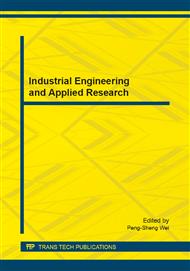p.438
p.443
p.449
p.453
p.457
p.461
p.468
p.472
p.476
Development on Silicon Rubber Elastic Composite Magnetic Abrasive and Research on Internal Polishing
Abstract:
With the use of Magnetic Abrasive Finishing (MAF) to polish surfaces of the parts, roughness on the surfaces can reach a level like a mirror. We have devoted to the study of MAF for many years; the magnetic abrasive particle we have developed can yield a value of Ra 0.008μm (Rmax0.1μm), which is similar to the surface of a mirror. However, there is no way to absorb charging of abrasive particle during polishing for conventional stiff abrasive materials. Therefore, it is difficult to obtain the nanolevel mirror surface. The study is based on silicon rubber and mix Sic and pure iron powder to develop elastic magnetic abrasive particles. During the process, employing the micro elastic of the polymer elastic magnetic abrasive particle to make the particle shape change and increase the contact area, therefore to improve the surface roughness by micro polishing to achieve a nanolevel mirror polishing demand。 The particle could be made easily in a short time, therefore it could reduce production cost and achieve environmental protection simultaneously.
Info:
Periodical:
Pages:
472-475
Citation:
Online since:
August 2014
Authors:
Price:
Сopyright:
© 2014 Trans Tech Publications Ltd. All Rights Reserved
Share:
Citation:


